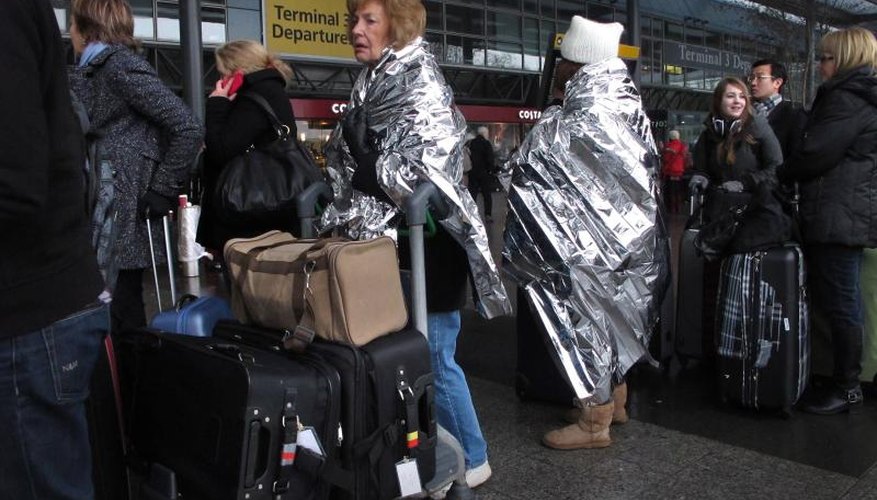Overview

Peter Macdiarmid/Getty Images News/Getty Images
The Basics
A thermal blanket, also known as an emergency blanket, Mylar blanket and space blanket, consists of a thin sheet of plastic with an extremely reflective coating. It is often used to treat hypothermia, but can also be used to make sleeping bags warmer, to construct homemade solar heating ovens and for other projects. It is either silver or gold in color, and is usually big enough to wrap an adult in. When it is folded up, it is extremely compact and weighs very little, which makes it useful for emergency kits.
Thermal Radiation
People lose heat through thermal radiation, by radiating infrared energy. The warmer you are, the more energy is radiated, which cools your body. A thermal blanket is more than 80 percent reflective. That means that more than 80 percent of the thermal energy that reaches it is deflected back towards its source. If you are wrapped in a thermal blanket, your own infrared heat is reflected back towards you.
Evaporation and Convection
People also lose heat through evaporation and convection. When sweat or other liquid on the body evaporates into the air, it takes some body heat with it. That is why people perspire -- as a way to keep cool. Convection, the movement of air currents, can speed up evaporation, cooling the body much more quickly. If a hiker or accident victim gets wet in an extremely cold environment, evaporation can become a big problem, causing hypothermia or even death. A thermal blanket forms a barrier between its user and the surrounding air, preventing moisture from escaping and carrying heat away.
Conduction
The biggest weakness the thermal blanket has is in stopping conduction. When a warmer object comes in contact with a colder object, heat slowly flows from the warmer object to the colder one in a process called conduction. The best way to stop conduction is with a thick insulating layer, such as a winter jacket, which can slow the flow of heat. Because a thermal blanket is so thin, it only has a limited ability to prevent heat conduction. Given its other useful thermal properties, it can still help keep someone warm in an emergency.
References
Writer Bio
Isaiah David is a freelance writer and musician living in Portland, Ore. He has over five years experience as a professional writer and has been published on various online outlets. He holds a degree in creative writing from the University of Michigan.



